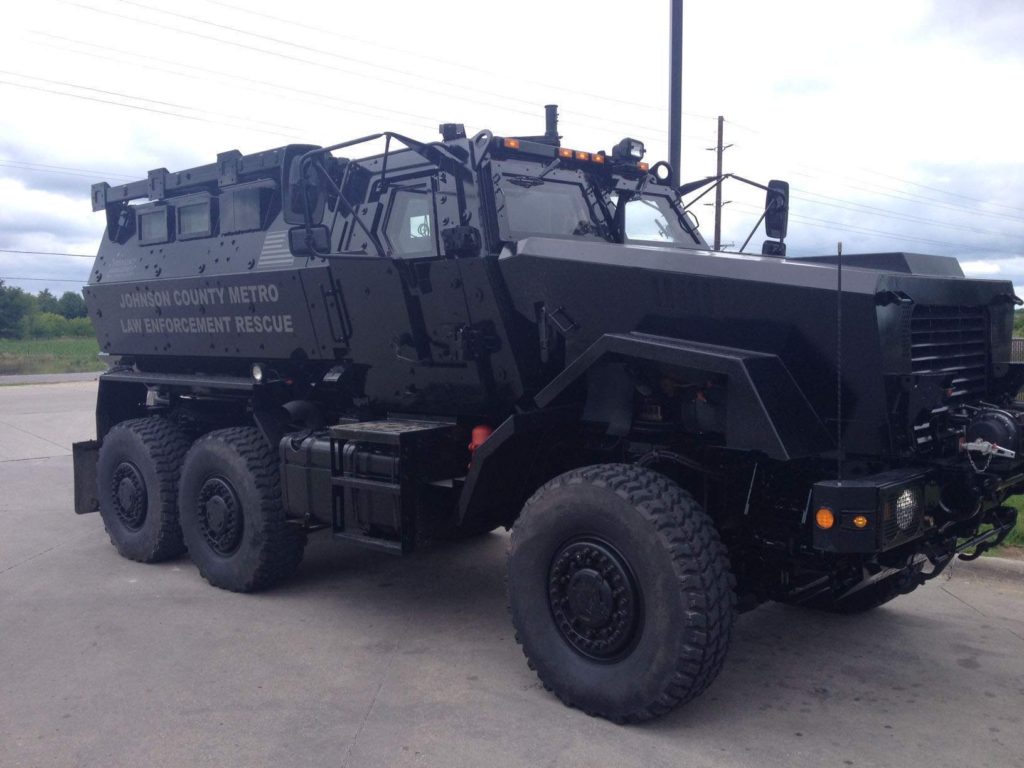Back during my college years, when there seemed to be unlimited time to sit with friends and discuss hopes and dreams, I once expressed my desire to go on a game show and win a new car.
“It would be cool,” I dreamily pronounced, envisioning hugging Bob Barker in multicolored confetti rain, and never again searching for rides home.
One of our friends — an economics type not adept in dreaming — snorted and began a now legendary rift on hidden costs of “free” things.
It was the first time I understood the saying, “Be careful what you wish for.” It was also the night I made a promise I’d never purposefully be that economics friend, always pointing out the down side. I’d be positive and find solutions.
That night, the conversation and my reaction to it, is a large part of the reason I’ve not written about the Mine-Resistant Ambush Protected (MRAP) obtained by Johnson County law enforcement. I was hoping for the best, relying on what I’m still convinced was good intentions, and searching for justification.
But, after all of these weeks, I must admit this particular military-grade prize is a dud.

In the wake of the Mike Brown shooting in Ferguson, Missouri, plenty was written about the militarization of local police. I won’t rehash it here, except to say that while the MRAP concerned me on this level, the worry wasn’t enough for dismissal of the vehicle and defense that offensive capabilities had been removed and that the truck would be used for good.
As evidence, the MRAP was rolled out in early July to help with flood evacuations near Hills. Mark Carlson of KCRG-TV was on the scene and his report contains footage.
I was asked this week to take a closer look at that footage. Did I notice an officer in waders led the vehicle through the floodwaters, making sure it remained on the road? No, I didn’t catch that detail the first time, but I did during review.
Others in and around Johnson County have additional concerns. For instance, while placing the MRAP on the county’s insurance plan may not have immediate taxpayer cost, what happens to premiums if its deployment results in a death?
How many Johnson County roads and bridges are capable of supporting the 60,000-pound vehicle? Was I aware the vehicle had to be towed out of the landfill twice, after it was stuck during training exercises, and that taxpayers footed the not-insignificant cost?
Veterans said MRAPs weren’t developed to respond to natural disasters, and questioned how maneuverable they are in snow and ice.
To date, no deployment policies have been made public outside of general statements by Sheriff Lonny Pulkrabek.
“It’s a tool in the toolbox,” he said.
Maybe so, but the owners of the toolbox have not yet discussed if this tool is wanted, or if its cost, figuratively and literally, is justified.
Johnson County residents and emergency management may have been better served by what was behind door number two.
It is probably best to regulate the MRAP to parade duty until the public can decide what to do. On the other hand, we still don’t know how it might damage the roads.
This column by Lynda Waddington originally published in The Gazette on Sept. 27, 2014.
